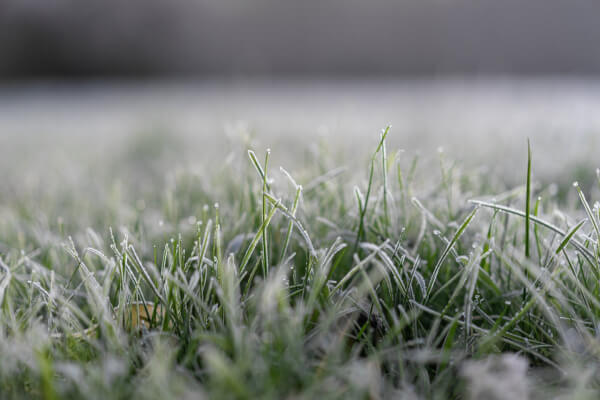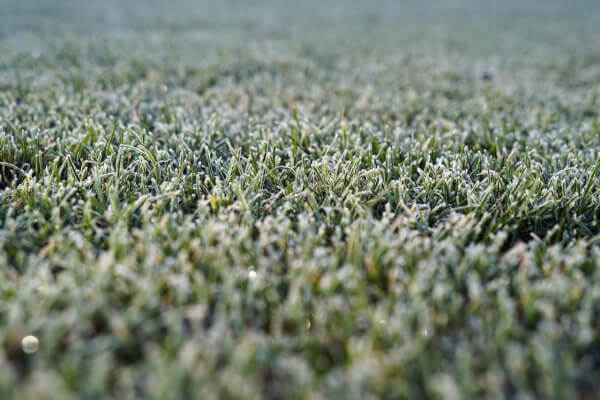
The main goal with winter lawn care is to keep the grass in optimum health, ready for spring mowing.
So, if you’ve been wondering about cutting grass in winter, researching winter grass seed or are curious about winter fertilisers, look no further.
Read on to learn everything about caring for your lawn in winter, including how to adjust the cutting height on your Hayter lawnmower.
Should you cut your grass in winter?
When we get into the thick of winter, you should stop cutting your grass.
This is because colder weather will stunt your grass’ growth, and the grass needs to be longer than usual to stay healthy throughout the harsher winter weather.
Keeping your grass longer in winter helps to insulate your lawn from the cold, improves energy storage, protects soil from frost and will benefit your garden’s ecosystem.
Because of uncharacteristically warmer weather in recent years, some parts of the country may have been able to push their final mow a few weeks later, towards the end of November. As always, make sure to check the weather forecast to plan ahead.
When to stop cutting grass before winter
The cutting season typically ends between late October and early November, though this time frame can be extended depending on the average temperature.
When temperatures are consistently 6°C or lower, you should stop mowing your lawn entirely. Most years, you will find the weather to reach this average temperature from Bonfire Night (November 5th) onwards.
In contrast, if the average temperature in November is still around 10°C, you should be able to get away with a couple more mows before you tuck away your Hayter Hawk or Harrier mower.
If you do decide to mow after November 5th, remember to mow at midday when the sun is at its highest and the weather is warmer. The grass should be left longer, with the cutting height on your mower set to its highest level – this will account for the slower grass growth.
Knowing how to cut your grass is just as important as knowing when to cut it, so make sure you know how to set the height of your Hayter mower:
To raise the cutting height on a Hawk mower, take advantage of the one-touch height-of-cut button. This will allow you to choose between seven different heights, from 19mm to 70mm.
Set the height to 70mm and cut your lawn as you would normally, making sure to pass over fallen leaves, as the higher cut setting will also allow you to pick up leaves and collect them in your grass bag.
To raise the cutting height on a Harrier mower, use the height-of-cut-lever to choose a cutting height between of 16mm to 60mm. Set the height to 60mm, and as with the Hawk, remember to pick up stray leaves on the ground by running the mower over them.
Once you have finished your last mow of the season, be sure to immediately book a servicing with an authorised Hayter dealership. This will keep your mower’s warranty intact, as well as making sure it’s ship-shape for next spring.

When to mow lawn after winter
Between March and April is most likely when you will mow the lawn after winter, but similarly to your last mow of the year, your first mow will depend on the average temperature at the time of cutting.
If experiencing a frosty, exceptionally cold or sodden early spring, do not mow your lawn – no matter how tempting it might be!
As the grass begins to grow faster in the warmer spring weather, you should mow your lawn every two weeks, shortening to every 10 days after a couple of mows, and then once a week from mid-May.
Leave your cutting height high until weekly mowing commences, being careful to never remove more than a third of your grass height.
For more information, read our guide on when to cut your grass, and discover the optimum mowing heights and times of day to mow your lawn during all seasons.
Feed grass in winter
Feeding your grass in winter is essential to promote healthy growth in spring, helping the grass recover from the stresses caused by winter weather.
Applying a winter fertiliser will help strengthen your lawn grass roots, improving its resilience to frost and disease – as well as giving it a much-needed nutrient boost.
You should feed the grass around the time of your last mow, selecting a feed that’s low in nitrogen. Instead, high potassium variants of feed can help strengthen roots.
If in doubt, make sure to read the grass feed packaging carefully and ask an assistant for help.
Should you fertilise your lawn in winter?
It is possible to fertilise your grass in winter, but avoid fertilising after the final mow. You can find specific variants of fertiliser made for lawns in the winter months, commonly higher in potassium as recommended above.
For generally better lawn health going into winter, the best time to fertilise grass is when the grass is still growing. Because of this, it is recommended to fertilise in spring and late autumn, stopping just before the first frost.
Get in touch
Wondering which Hayter mower would be best for your garden? Don’t worry, our helpful team are here to help.
Contact us today with your questions or consult the Hayter blog for more lawncare guides, product overviews and tips.
To keep up to date with everything Hayter, follow us on Instagram and Facebook. We accept monthly lawn submissions with the hashtag #HayterStripes or by tagging Hayter in your photos!


